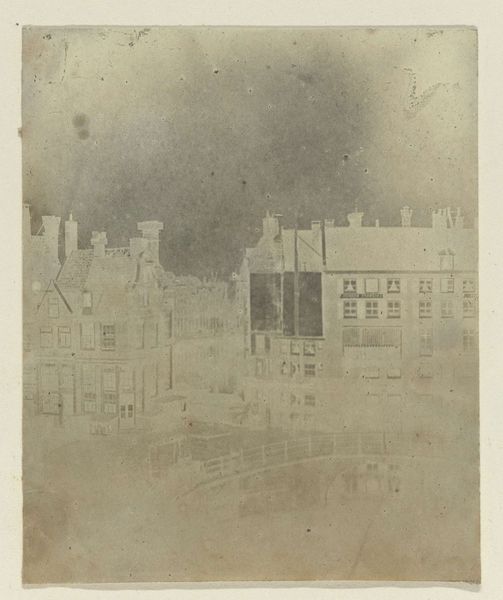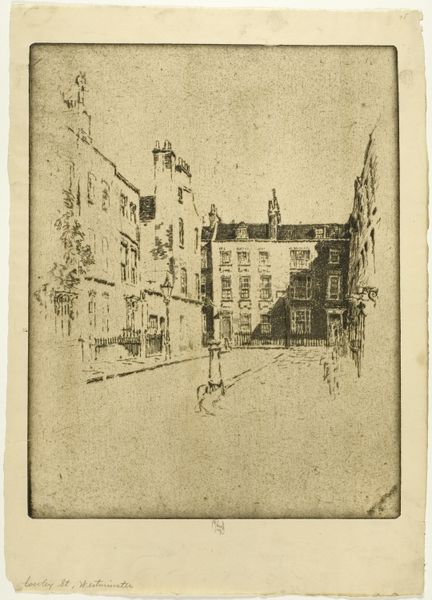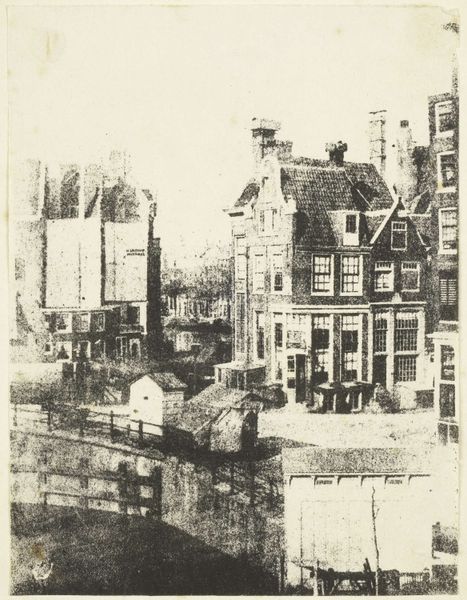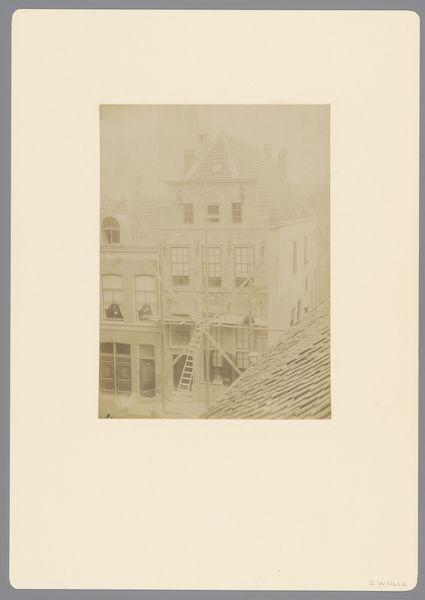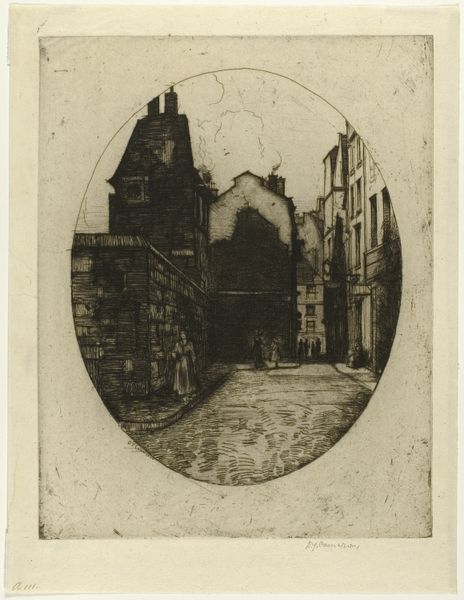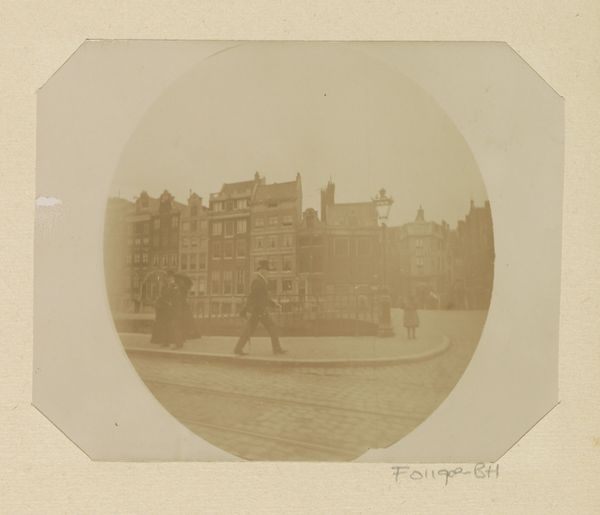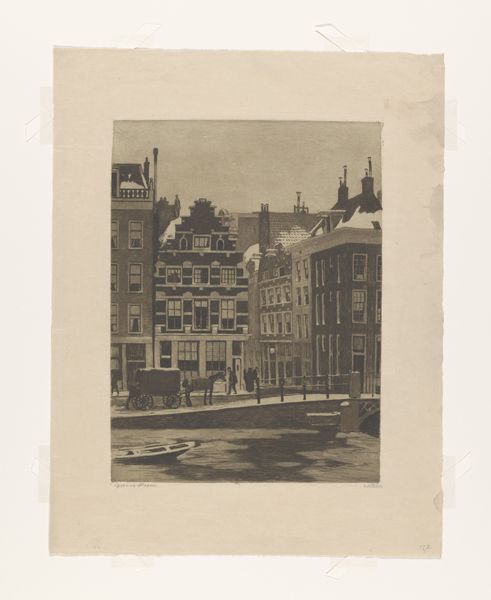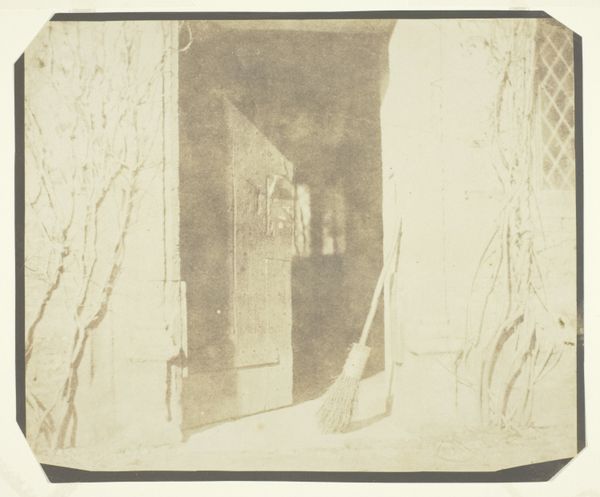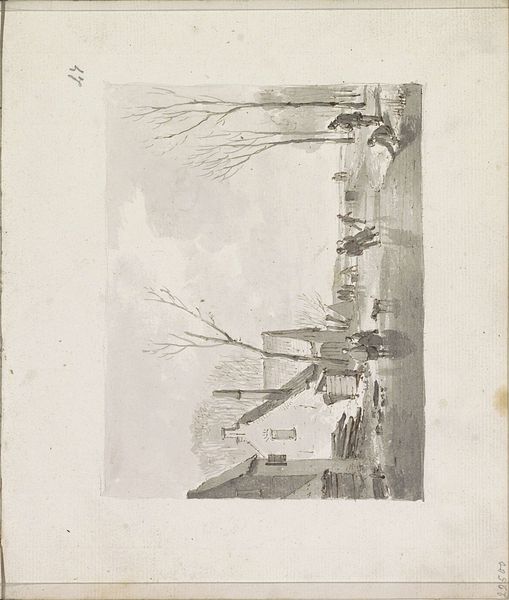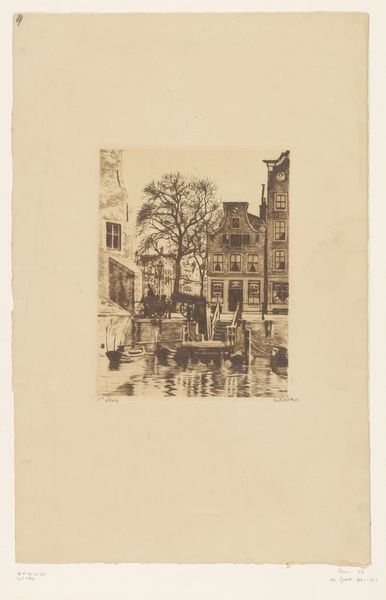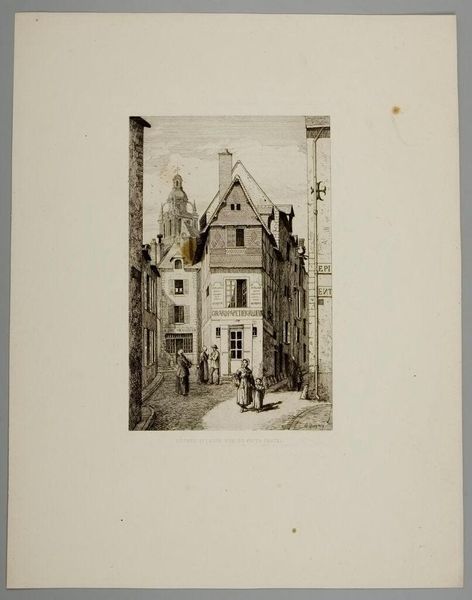
Gezicht vanuit het huis van de fotograaf richting Logement Rondeel, Amsterdam 1845
0:00
0:00
eduardisaacasser
Rijksmuseum
daguerreotype, photography
#
daguerreotype
#
photography
#
cityscape
#
realism
Dimensions: height 84 mm, width 71 mm
Copyright: Rijks Museum: Open Domain
Curator: What a fascinating cityscape captured by Eduard Isaac Asser in 1845. It's titled "View from the Photographer's House towards Logement Rondeel, Amsterdam," rendered using the daguerreotype process. Editor: My first impression is of a ghost. The image is faint, almost ethereal, as if capturing a city on the verge of disappearing. The tonal range is limited, and there's a distinct lack of sharp detail. It’s like seeing through time itself. Curator: Indeed. The ghostly quality you perceive speaks to the daguerreotype process. The silver-plated copper plate makes each image unique and mirrors the present cultural memory through visual symbols. These earliest forms of photography give weight to what we consider cultural symbols of place. Editor: Absolutely. And speaking of the process, notice the compositional elements. The high vantage point gives a sense of distance, while the arrangement of buildings leads the eye through the frame, creating depth even within the limited tonal range. Curator: Yes, and beyond mere visual composition, this angle hints at the photographer's subjective experience. This vantage point turns Asser’s home into a symbol for private life in an industrializing world. The cityscape becomes a symbolic projection of inner emotion. Editor: I appreciate how the formal realism almost veils this emotion you discuss. The very nature of daguerreotype—its mirror-like surface, its fragile quality—mirrors a fleeting, transient moment perfectly. It almost predicts its own obsolescence as new mediums appear. Curator: It’s that perceived obsolescence, perhaps, that fuels our present fascination. The medium offers a tangible link to the past; and that helps us look more critically at cultural persistence and innovation over time. What stays with us? What fades away? Editor: So well-stated! And seeing this image, I find myself not dwelling on a sense of melancholy, but rather a peaceful stillness that exists. I mean, it truly presents photography as a method that captures stillness rather than progress, something very different from contemporary practices. Curator: The effect of that stillness—a testament to its enduring allure—helps remind us of our continuous fascination with memory, progress, and history. Editor: Yes. Looking at the piece technically, and in all of its spectral form, there’s a profound quiet here that's extremely beautiful and thought-provoking.
Comments
No comments
Be the first to comment and join the conversation on the ultimate creative platform.
